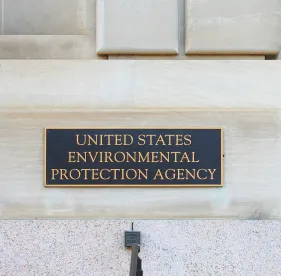On January 19, 2021, the United States Environmental Protection Agency (“EPA”) introduced several new action items to further complement its progress under the 2019 Per-and Polyfluoroalkyl Substances ("PFAS") Action Plan. These action items, introduced just one day prior to President Biden’s inauguration, put EPA one step closer to formal regulation of these substances, and provides PFAS manufacturers, producers, users, and discharges a blueprint of the compliance requirements that will dictate their operations within the coming years.
PFAS are man-made chemicals that are typically produced by industrial and manufacturing operations and used in consumer goods. During production and use, these substances have been found to migrate into soil, water, and air, and are not known to readily breakdown, thus leading to their “forever chemicals” moniker. While a thorough examination of the health effects of these substances is ongoing, EPA has found that exposure to certain PFAS compounds can result in increased cholesterol, impacts to infant birth weights, effects on the immune system, cancer, and thyroid hormone disruption.
With an increased focus on these substances by states and the United States Congress, EPA’s revised actions items seek:
-
Development of National Primary Drinking Water Regulations for PFOA and PFOS: Under the Safe Drinking Water Act, EPA is preparing to issue a final regulatory determination for perfluorooctanoic acid (“PFOA”) and perfluorooctane sulfonic acid (“PFOS”) – the two most widely known PFAS. Development of primary drinking water regulations could result in the development of PFAS discharge limitations for sources discharging upstream of drinking water intakes.
-
Advanced Notice of Proposed Rulemaking Addressing PFOA and PFOS: EPA is issuing an Advanced Notice of Proposed Rulemaking for public comment to obtain additional information on PFOA and PFOS to guide the Agency’s future regulation of these substances. Specifically, EPA is seeking comment as to whether PFOA and/or PFOS should be regulated as a hazardous substances under CERCLA or RCRA. A designation under CERCLA could have significant impacts on Superfund sites, especially if EPA determines these sites must be reopened to address historic PFOA/PFOS contamination.
-
Further Evaluation of PFAS in Drinking Water: EPA is proposing to collect new data on 29 additional PFAS under its fifth Unregulated Contaminant Monitoring Rule. EPA intends to use the results to determine the need for additional PFAS regulation under the Safe Drinking Water Act.
-
Toxicity Assessment for PFBS: EPA has released a toxicity assessment for perfluorobutane sulfonic acid (“PFBS”). While not a regulation, the toxicity assessment is a key feature in determining future regulation of PFBS.
-
Advanced Notice of Proposed Rulemaking Regarding the Presence and Treatment of PFAS in Wastewater: EPA is seeking to collect data on the presence of PFAS in manufacturers’ wastewater discharges. This information will guide EPA’s determination as to whether these substances warrant formal regulation through national Effluent Limitation Guidelines.
While EPA made substantial progress under its 2019 PFAS Action Plan, these additional action items promise to continue that progress well into President Biden’s term. While it is unclear the level of emphasis the new Administration will place on PFAS, it is apparent that this issue crosses all party lines, and both the states and EPA will continue to push for formal regulation of these forever chemicals.
Manufacturers, producers, users, and dischargers of PFAS must prepare now for the impacts of these regulations. As information on these substances continue to develop, PFAS users must: (1) determine the presence of PFAS in their operations; (2) determine paths of exposure to PFAS from their operations (air, water, waste, consumer use, etc.); and (3) proactively develop their own action plan to address these substances to ensure compliance once formal regulations are implemented.




 />i
/>i

